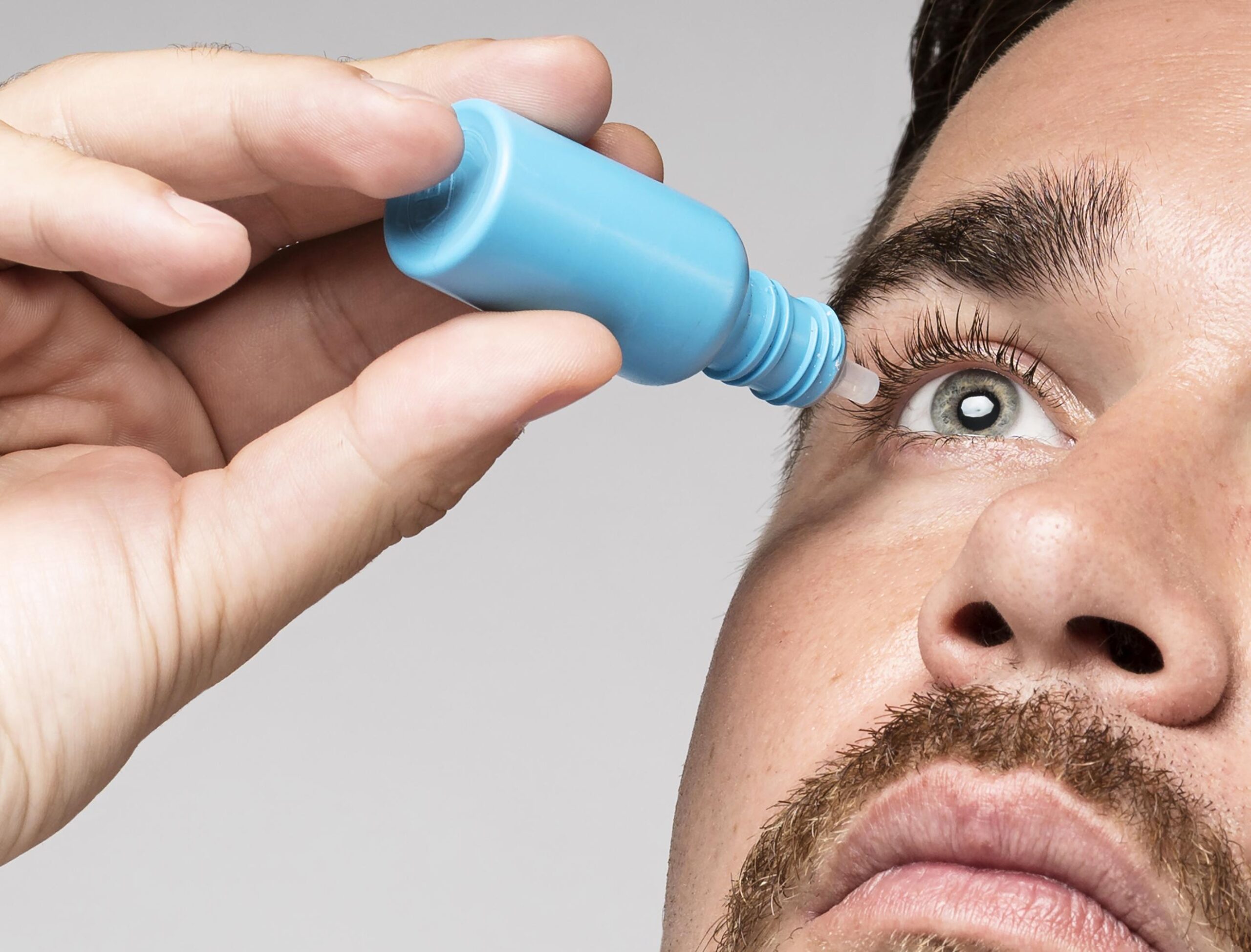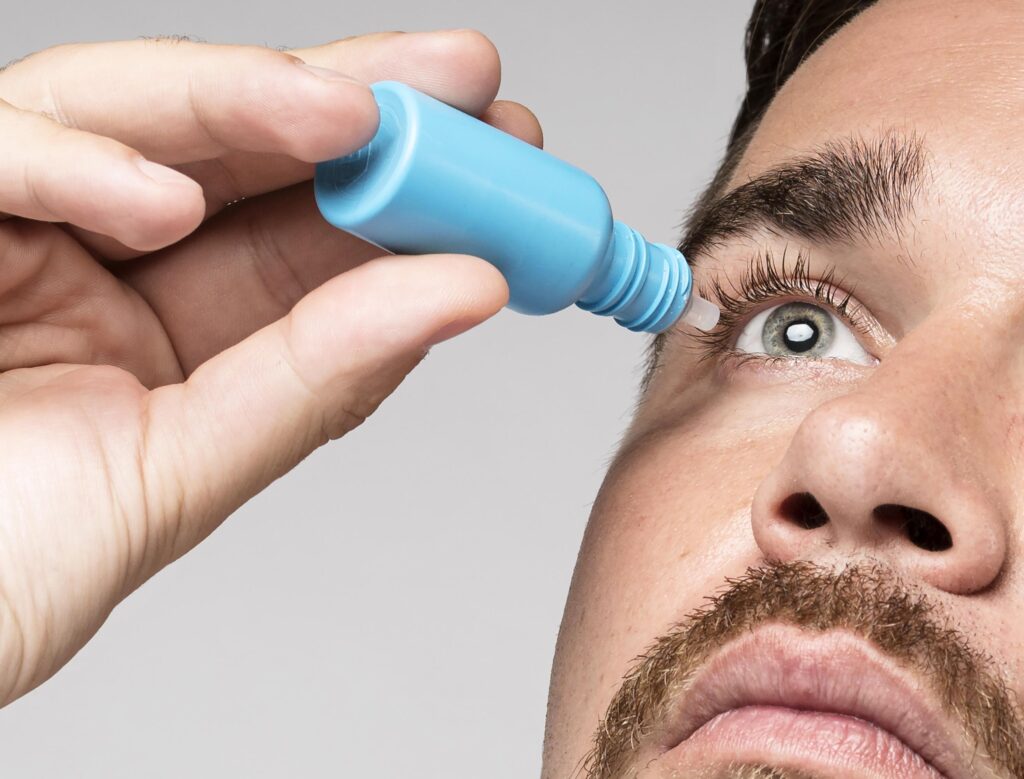Overview
Eye infections, such as pink eye (conjunctivitis) and bacterial keratitis, are common yet frustrating conditions that can significantly disrupt daily life. Whether caused by bacteria, viruses, or allergens, eye infections demand timely care to prevent complications and restore eye health. Among the most effective treatments for bacterial eye infections are antibiotic eye drops. But with various options available, including over-the-counter and prescription-strength solutions, how do you choose the best one?
In this Blog, we’ll explore the best antibiotic and antibacterial eye drops for adults, focusing on scientifically proven treatments. From pink eye to more severe bacterial infections, we’ll explain what works, why it works, and how you can access the right solution. We’ll also address common questions, such as:
- What are the best antibiotic eye drops for bacterial conjunctivitis?
- Can you buy antibiotic eye drops over the counter?
- Which antibacterial eye drops are most effective for pink eye?
By the end of this article, you will understand the best options for safely and effectively treating bacterial eye infections.

Stop the Spread of Pink Eye – Start Treatment Fast!
Bacterial conjunctivitis is highly contagious. Get effective treatment with ophthalmic eye drops to recover quickly and avoid spreading it to others.
Seek treatment NowWhat medications are used to treat bacterial eye infections?
Bacterial eye infections require targeted treatments to eliminate pathogens, alleviate symptoms, and prevent complications. Antibiotics for eye infections come in various forms, including drops, ointments, and oral medications, each tailored for specific bacterial infections.
Research says: Although conjunctivitis is usually a condition that rarely results in vision loss, it is essential to rule out other potentially sight-threatening causes of red-eye during evaluation.
Quinolone Antibiotics and bacterial eye infections
Quinolones are a class of broad-spectrum antibiotics widely used for bacterial eye infections due to their ability to target and kill various bacteria.
- Ciprofloxacin (Ciloxan): This antibiotic, often prescribed for bacterial conjunctivitis and corneal ulcers, is available in eye drop for eye infection form in both generic and branded versions.
- Levofloxacin (Quixin, Iquix): Effective for treating bacterial conjunctivitis, levofloxacin is available in eye drop form and is moderately priced.
- Moxifloxacin (Vigamox, Moxeza): This is a powerful, advanced-generation antibiotic eye drop, particularly effective against resistant bacteria.
- Gatifloxacin (Zymaxid): A popular choice for bacterial conjunctivitis, gatifloxacin eye infection eye drops have a strong track record of effectiveness.
- Ofloxacin (Ocuflox): Known for treating corneal ulcers and conjunctivitis, this moderately priced eye drop is commonly recommended.
Macrolide Antibiotic in Eye Infections
Macrolides are well-tolerated antibiotics often used for individuals allergic to penicillin.
- Erythromycin (Ilotycin): This antibiotic, available as an ointment, is particularly useful for treating mild to moderate eye infections, including those in pediatric patients.
- Azithromycin (AzaSite): This newer macrolide is known for its long-lasting action and is used for bacterial conjunctivitis.
Aminoglycoside Antibiotic for eye infections
Aminoglycosides are potent antibiotics effective against gram-negative bacteria.
- Tobramycin (Tobrex): Frequently prescribed medicated eye drops for bacterial conjunctivitis and other mild infections; Tobramycin is available in both drop and ointment form.
- Gentamicin (Gentak, Garamycin): Effective against a broad range of bacteria, Gentamicin is commonly used for severe bacterial infections.
- Neomycin/Polymyxin B/Gramicidin (Neosporin Ophthalmic Solution): This combination antibiotic solution is effective for treating surface-level bacterial infections of the eye.
Polypeptide Antibiotic role in eye infections
Polypeptides are primarily used for their ability to treat superficial bacterial infections.
- Bacitracin (AK-Tracin, Ocu-Tracin): Available in ointment form, it is effective against gram-positive bacteria causing eye infections.
- Polymyxin B/Trimethoprim: A powerful combination that targets both gram-positive and gram-negative bacteria, ideal for conjunctivitis and blepharitis.
Antibiotic Combinations with Steroids helping with eye infections
These are prescribed to treat bacterial infections coupled with inflammation, reducing redness, swelling, and pain.
- Maxitrol (Neomycin/Polymyxin B/Dexamethasone): Combines antibiotics and a corticosteroid to combat infection and reduce inflammation.
- Tobradex (Tobramycin/Dexamethasone): A popular choice for bacterial infections where inflammation is a concern, this combination offers dual benefits.
- Zylet (Loteprednol/Tobramycin): Designed to manage both infection and associated swelling, it is often used for more severe conditions.
Sulfa Antibiotics and bacterial ocular infections
Sulfa antibiotics work by inhibiting the growth of bacteria rather than killing them directly.
- Sulfacetamide (Klaron): Often used for conjunctivitis, this antibiotic is available in both ointment and drop forms and is widely accessible.
Specialized and Rarely Used Options in Eye Infections
For specific or resistant cases, these antibiotics may be prescribed:
- Besifloxacin (Besivance): Known for its efficacy against drug-resistant bacteria, this ophthalmic suspension is highly potent.
- Neomycin/Polymyxin B/Bacitracin (Neo-Polycin): A triple antibiotic ointment ideal for localized infections.
- Lotemax (Loteprednol): Though primarily a corticosteroid, it is often used in conjunction with antibiotics to treat inflammation after eye surgery.
Important:
The best antibiotic for bacterial eye infections depends on the type of bacteria, severity of infection, and individual patient needs. Always consult a healthcare professional before using any medication, as incorrect usage can worsen the condition or lead to antibiotic resistance. With a variety of options available, it’s essential to choose the right treatment for optimal recovery.
“Timely treatment for bacterial eye infections is crucial. Ignoring symptoms like redness, discharge, or pain can lead to severe complications, including vision loss. Always consult early for accurate diagnosis and effective treatment.”

Find the Best Antibiotic Drops for Your Eye Infection Today!
Early treatment prevents worsening symptoms like severe redness, discharge, and permanent damage.
Consult now for expert adviceAntibiotics for eye infections by form and their primary uses
| Antibiotic Name | Form | Primary Use |
| Ciprofloxacin (Ciloxan) | Eye Drops | Bacterial conjunctivitis, corneal ulcers |
| Levofloxacin (Quixin, Iquix) | Eye Drops | Bacterial conjunctivitis |
| Moxifloxacin (Vigamox, Moxeza) | Eye Drops | Resistant bacterial infections |
| Gatifloxacin (Zymaxid) | Eye Drops | Bacterial conjunctivitis |
| Ofloxacin (Ocuflox) | Eye Drops | Corneal ulcers, conjunctivitis |
| Erythromycin (Ilotycin) | Ointment | Mild to moderate infections, pediatric use |
| Azithromycin (AzaSite) | Eye Drops | Bacterial conjunctivitis |
| Tobramycin (Tobrex) | Eye Drops, Ointment | Bacterial conjunctivitis, mild infections |
| Gentamicin (Gentak, Garamycin) | Eye Drops, Ointment | Severe bacterial infections |
| Neomycin/Polymyxin B/Gramicidin (Neosporin) | Eye Drops | Surface-level bacterial infections |
| Bacitracin (AK-Tracin, Ocu-Tracin) | Ointment | Gram-positive bacterial infections |
| Polymyxin B/Trimethoprim | Eye Drops | Conjunctivitis, blepharitis |
| Maxitrol (Neomycin/Polymyxin B/Dexamethasone) | Eye Drops | Infections with inflammation |
| Tobradex (Tobramycin/Dexamethasone) | Eye Drops | Infections with inflammation |
| Zylet (Loteprednol/Tobramycin) | Eye Drops | Infections with inflammation |
| Sulfacetamide (Klaron) | Eye Drops, Ointment | Conjunctivitis |
| Besifloxacin (Besivance) | Eye Drops | Drug-resistant bacterial infections |
| Neomycin/Polymyxin B/Bacitracin (Neo-Polycin) | Ointment | Localized bacterial infections |
| Lotemax (Loteprednol) | Eye Drops | Inflammation post-surgery |
What are the best antibiotic drops for bacterial conjunctivitis?
Bacterial conjunctivitis, or pink eye, causes redness, discharge, and irritation that can disrupt daily life. Treating it with the right antibiotic eye drops can speed up recovery and prevent spread. However, with numerous options available, it can be challenging to determine the best course of action. Below we’ll explore prescription-strength and over-the-counter antibiotic eye drops, clarifying the most effective treatments for bacterial conjunctivitis.
Research says: Failure to recognize and treat bacterial conjunctivitis may lead to complications, such as keratitis or anterior uveitis.
Prescription Medications
These are recommended for more severe or confirmed bacterial conjunctivitis and require a doctor’s prescription.
- Ciprofloxacin (Ciloxan): Effective against a wide range of bacteria, commonly used for conjunctivitis and corneal ulcers.
- Moxifloxacin (Vigamox, Moxeza): Broad-spectrum antibiotic, ideal for treating resistant bacterial strains.
- Gatifloxacin (Zymaxid): A reliable choice for bacterial conjunctivitis with proven effectiveness.
- Levofloxacin (Quixin): Targets gram-positive and gram-negative bacteria and is commonly used for moderate infections.
- Tobramycin (Tobrex): Effective against gram-negative bacteria, often prescribed for severe conjunctivitis.
- Polymyxin B/Trimethoprim: A powerful combination antibiotic that treats a range of bacterial conjunctivitis cases.
- Besifloxacin (Besivance): A newer-generation antibiotic, particularly effective for resistant bacterial strains.
Over-the-Counter Medications
These options are more suitable for mild cases or supportive treatments, but always consult a pharmacist or doctor if symptoms persist.
- Artificial Tears (e.g., Refresh, Systane): Over-the-counter eye drops help flush out irritants and soothe symptoms but do not treat the underlying bacterial infection.
- Boric Acid Eye Wash Solutions: Gentle cleansing to reduce bacterial load, often used as an adjunct to prescription antibiotics.
- Antibacterial Drops with Polyhexanide: In some regions, over-the-counter antibiotic eye drops are available without a prescription and target mild bacterial conjunctivitis.
Note: Over-the-counter options may alleviate symptoms but are less effective than prescription antibiotics in treating bacterial infections. Always consult a doctor in person or online for proper diagnosis and treatment.

Protect Your Vision – Get Professional Eye Care Immediately!
Delaying treatment can result in long-term vision problems or the spread of infection.
Schedule a consultation todayWhat is the strongest antibiotic for eye infections?
The top 5 strongest antibiotics for pink eye include:
- Tobramycin: Effective against gram-negative bacteria.
- Erythromycin is a macrolide antibiotic suitable for mild to moderate infections, especially in children who are allergic to penicillin.
- Ciprofloxacin: A potent quinolone antibiotic targeting many bacteria, including resistant strains.
- Ofloxacin: A reliable option for bacterial conjunctivitis and corneal ulcers, with excellent gram-negative coverage.
- Gentamicin: Effective for more severe bacterial infections, offering broad-spectrum activity against gram-negative and some gram-positive bacteria.
These antibiotics are widely used due to their effectiveness in treating common bacterial pathogens causing pink eye.

Don’t Ignore Eye Infections
Untreated bacterial eye infections can lead to complications such as corneal ulcers, vision impairment, or chronic eye issues. Act now to protect your vision.
Get treated NowWhat is the drug of choice for eye infections?
When it comes to treating eye infections, the choice of medication depends on the type and severity of the infection. Antibiotic eye drops, and ointments are the most effective options for bacterial eye infections. The drug of choice often varies based on the specific bacteria causing the infection, but some commonly prescribed and highly effective medications include:
- Ciprofloxacin (Ciloxan): A popular broad-spectrum antibiotic for bacterial conjunctivitis and corneal ulcers.
- Tobramycin (Tobrex): Ideal for gram-negative bacterial infections and frequently used for pink eye.
- Moxifloxacin (Vigamox): Known for its effectiveness against resistant bacterial strains.
- Erythromycin (Ilotycin): A gentle ointment, perfect for mild infections or for use in children.
- Polymyxin B/Trimethoprim: A combination drop effective for treating various bacterial eye infections.
Why These Drugs?
These antibiotics are widely used due to their broad-spectrum activity, quick relief of symptoms, and proven safety. They target common pathogens that cause bacterial conjunctivitis, keratitis, and other eye infections.

Need Relief From Pink Eye?
Misdiagnosed or untreated infections can lead to severe complications. Click here to explore effective solutions for bacterial eye infections.
Get the Right Treatment!When to consult a doctor?
It’s important to consult a doctor if you experience any of the following symptoms, as they may indicate a serious eye infection requiring professional treatment:
- Severe redness or swelling: If redness and swelling worsen or persist.
- Vision changes: Blurry, double vision, or difficulty focusing.
- Eye pain: Moderate to severe pain that doesn’t improve.
- Excessive discharge: Thick yellow, green, or white discharge.
- Light sensitivity: Increased sensitivity to bright lights.
- Symptoms lasting over 72 hours: No improvement after three days.
- Eye trauma or contact lens use: Injuries or infections in lens users.
- Signs of spreading infection: Fever, chills, or swelling beyond the eye.
FAQs about antibiotic for eye infections
Yes, mild bacterial conjunctivitis can sometimes go away without treatment. The immune system can often clear the infection within 7–10 days. However, antibiotic eye drops or ointments can speed up recovery and reduce the risk of spreading the infection to others.
Yes, antibacterial eye drops are highly effective for treating bacterial eye infections, including conjunctivitis, keratitis, and blepharitis. These drops work by targeting and killing bacteria or inhibiting their growth, helping to alleviate symptoms such as redness, swelling, and discharge.







